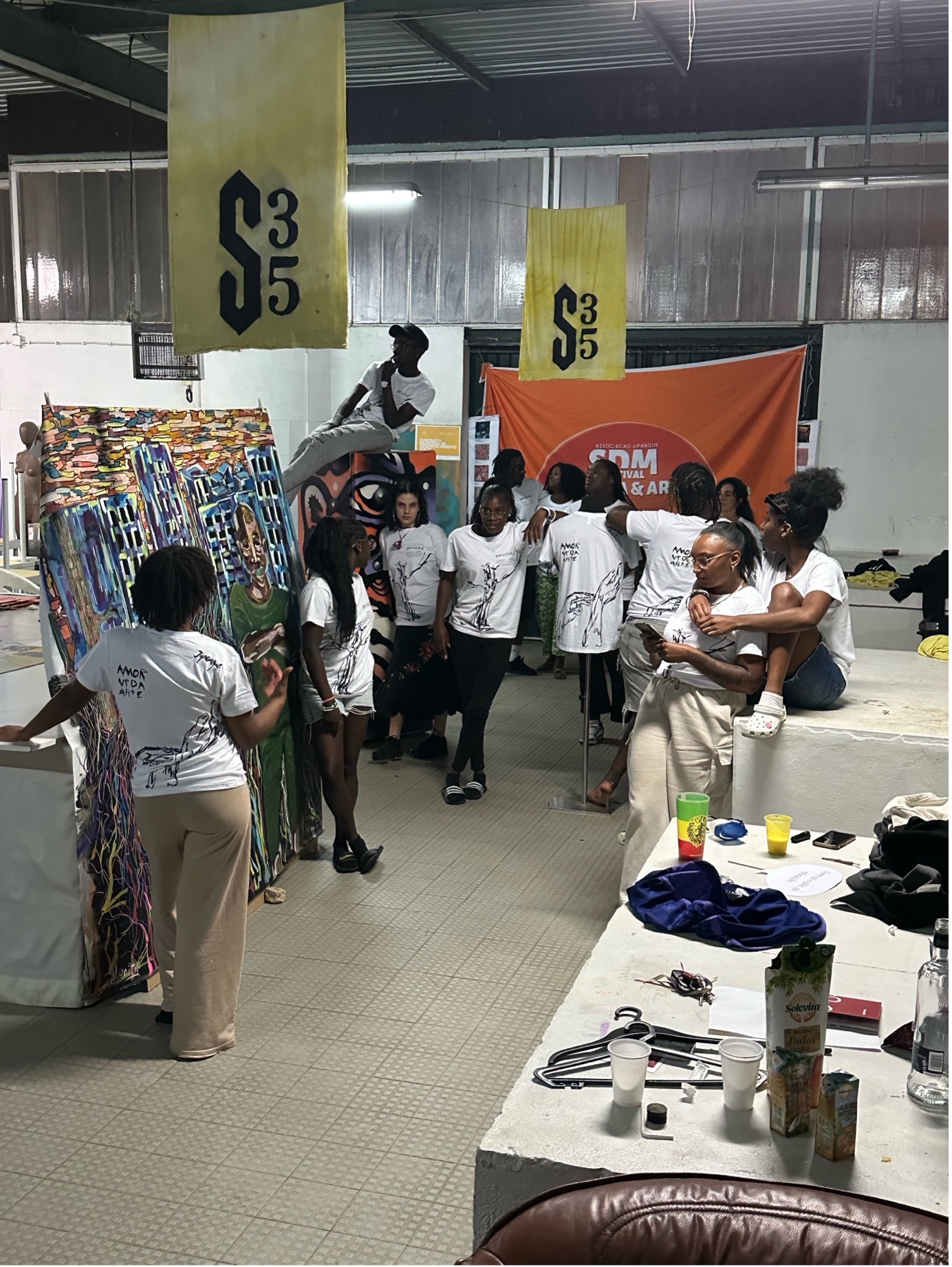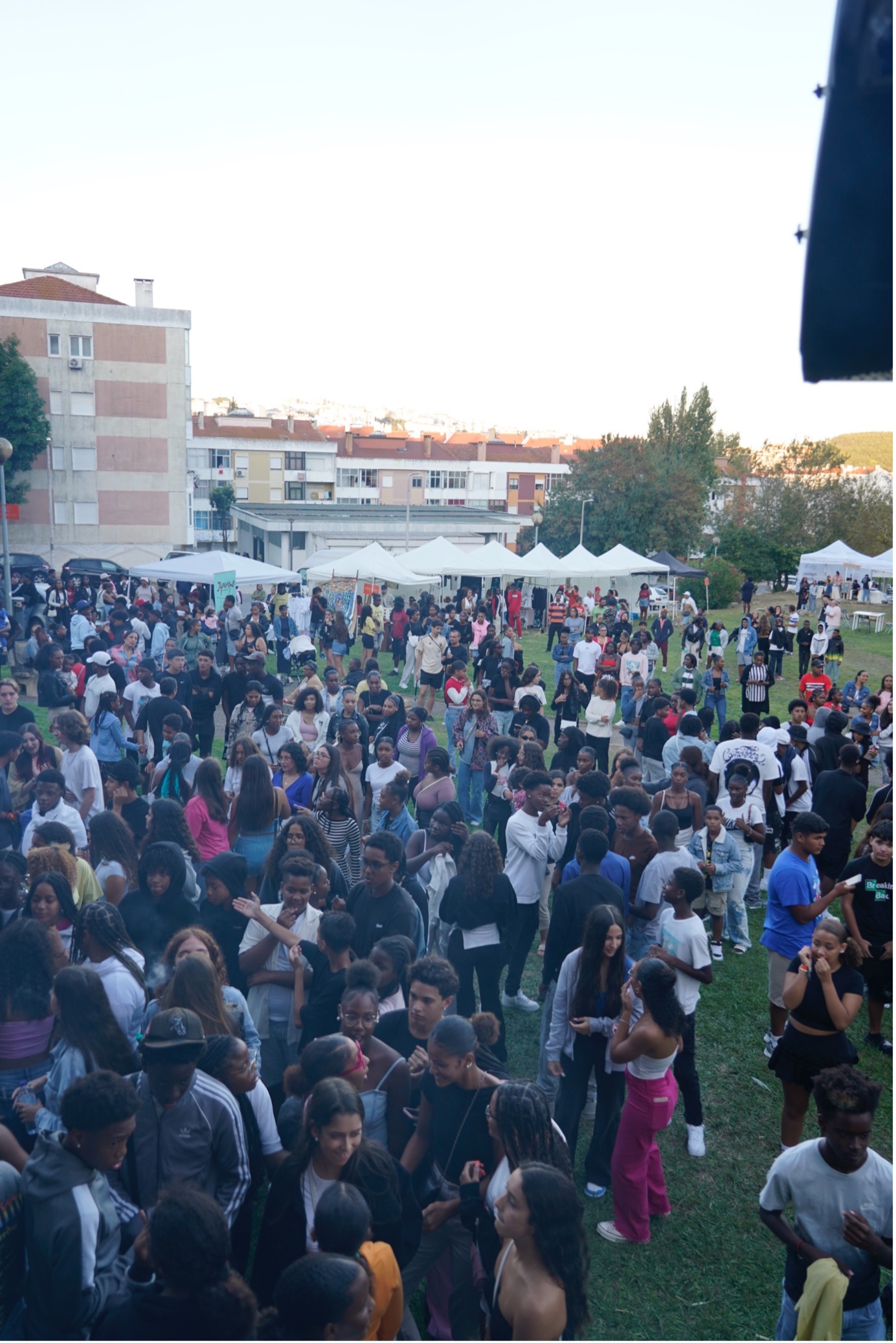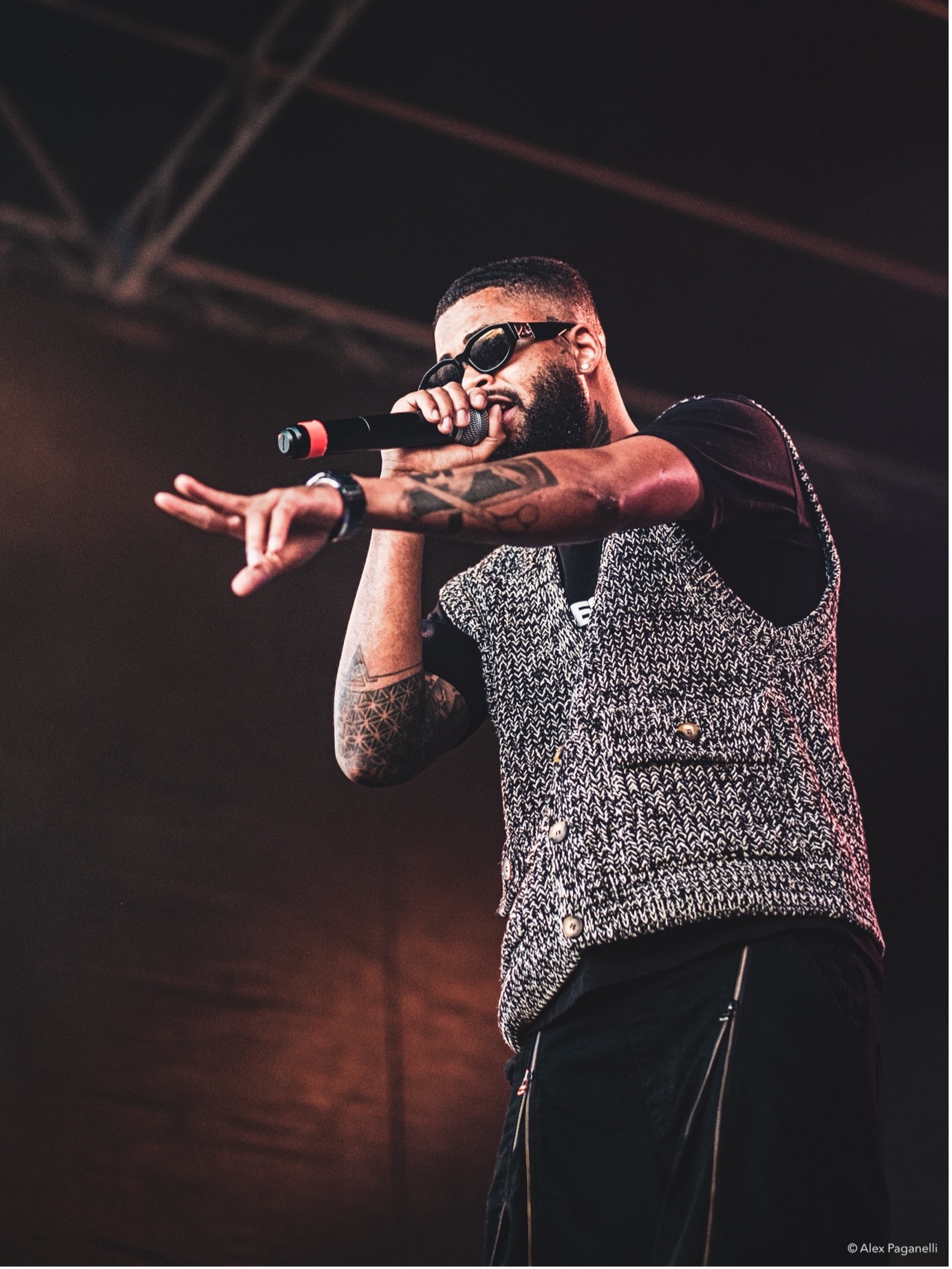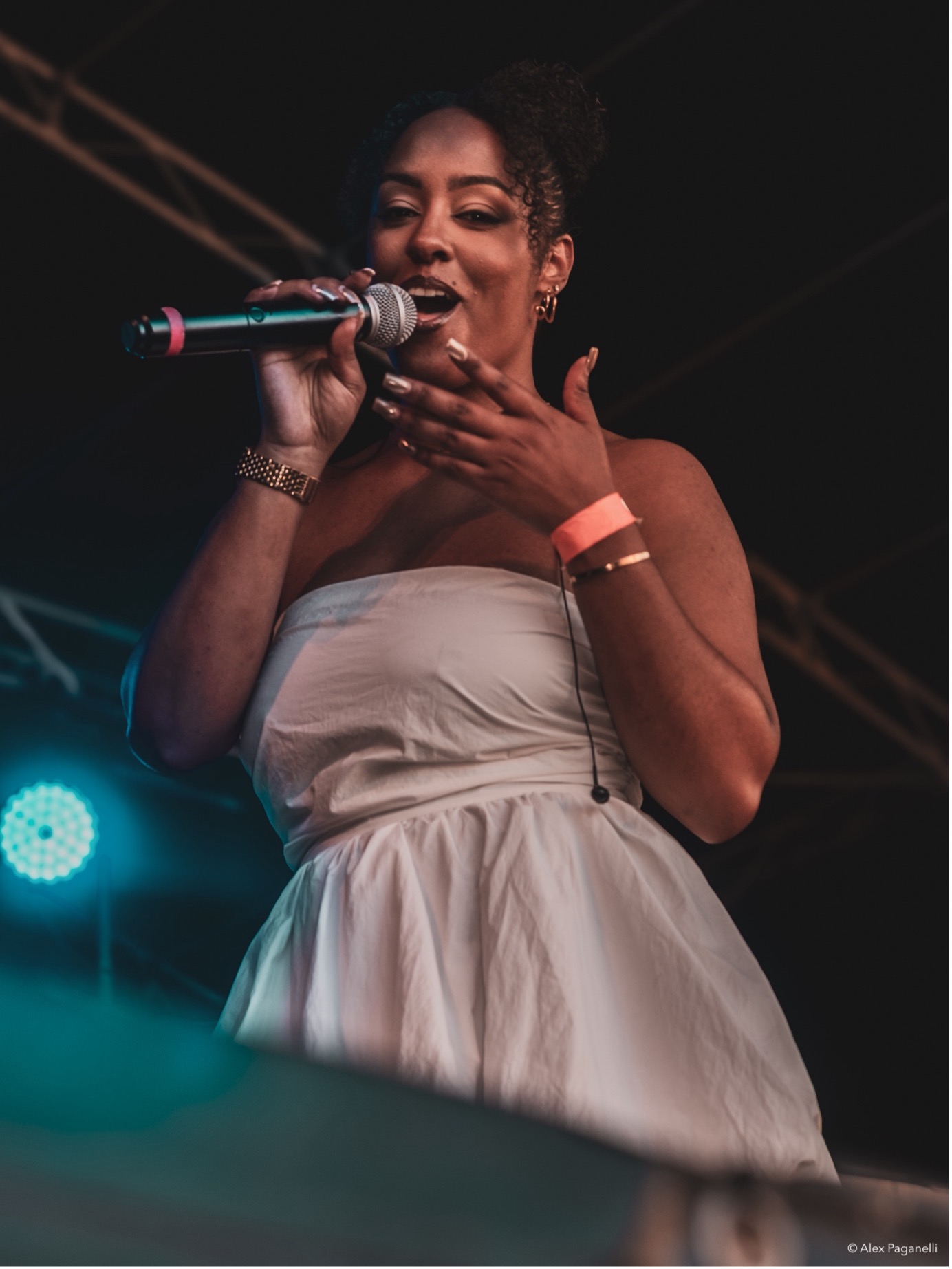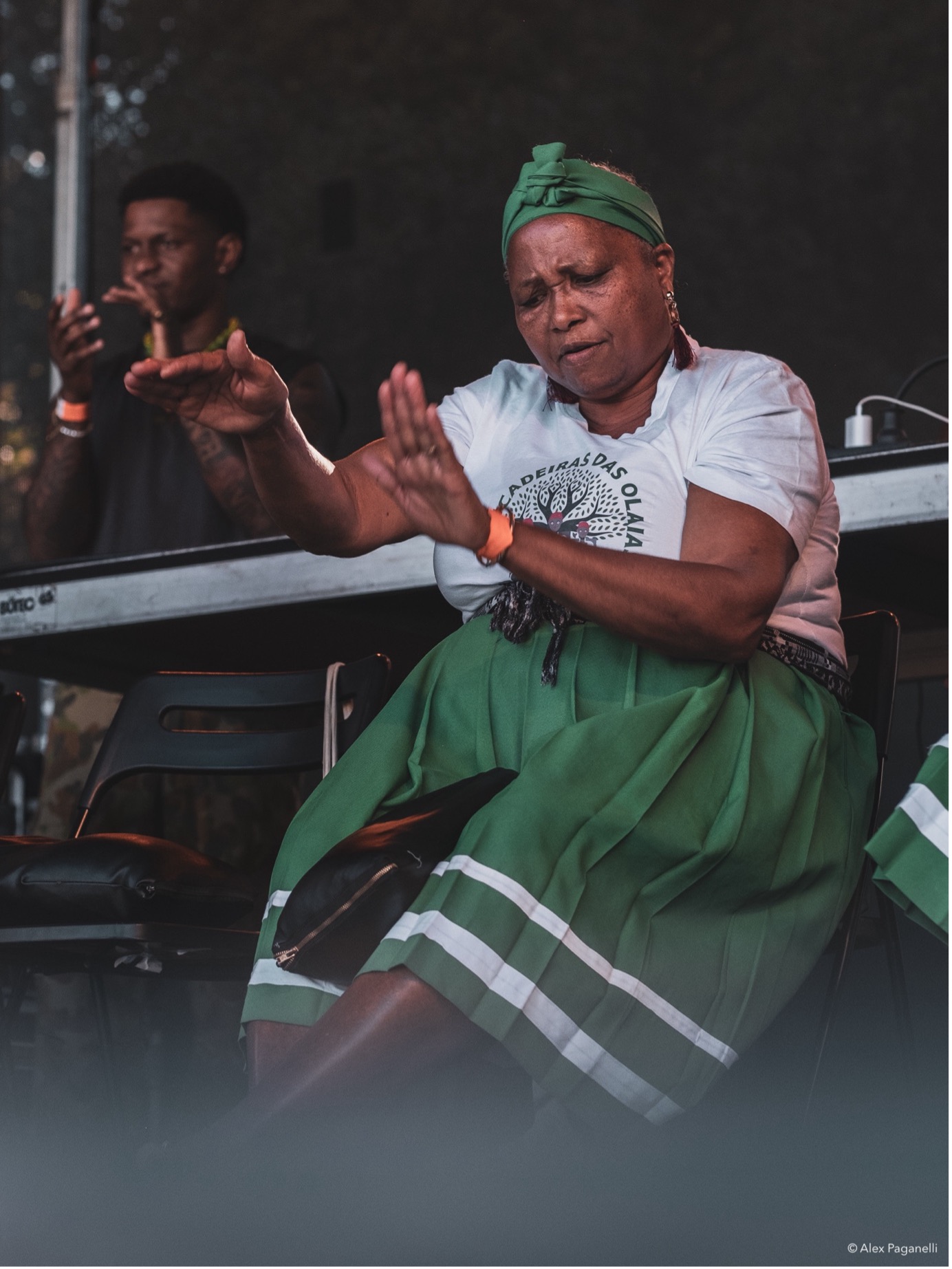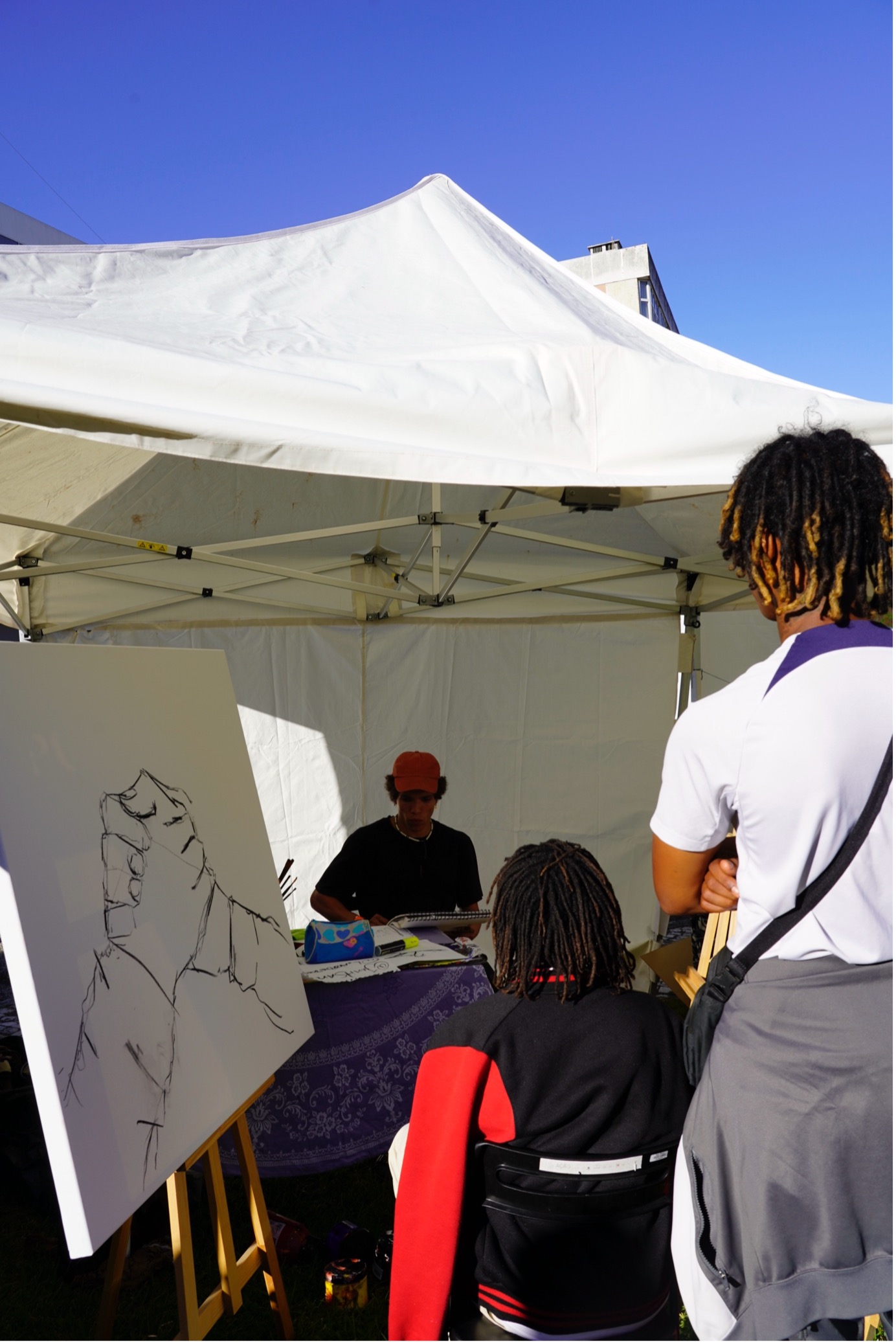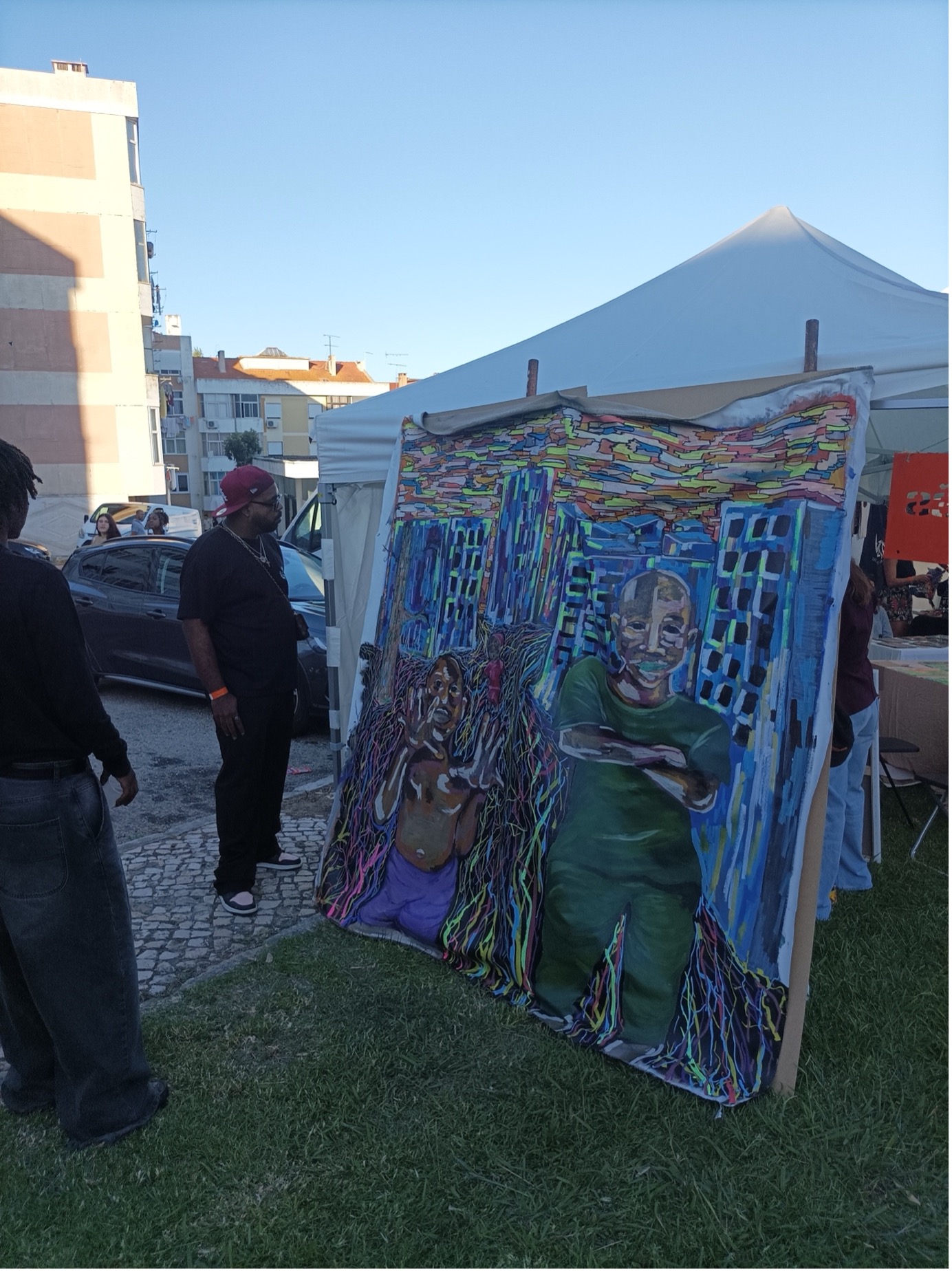Prioritising the places and people that need it the most
SDM CULTURA E ARTES FESTIVAL
SDM CULTURA E ARTES FESTIVAL
SDM Culture and Arts Festival is an annual celebration of community, culture, and creativity, bringing together emerging artists, youth, and families for two days of live music, art exhibitions, workshops, and cultural exchange. Rooted in social inclusion and empowerment, the festival transforms Serra das Minas into a vibrant multicultural hub, showcasing the rich artistic talent of Afro-descendant communities and beyond.
Portugal
Local
Serra das Minas neighbourhood
Mainly urban
It refers to other types of transformations (soft investment)
Yes
2024-09-09
No
No
No
As a representative of an organisation
The “SDM Culture and Arts Festival” is an annual initiative organised by the PANGUE D’AMI, aiming to promote social inclusion, artistic expression, and strengthen community bonds in the Serra das Minas community in Rio de Mouro, Sintra, Lisbon, Portugal. This event celebrates various forms of art and culture, offering a platform for emerging artists, vulnerable youth, and small entrepreneurs. Held over two days, it provides live music, workshops, craft fairs, educational activities, and spaces for intergenerational interaction. The festival gathered mostly Afro-descendants from the Angolan, Cape Vert, São Tomé e Princípe, Guinea, and Mozambique nationalities, representing a truly multicultural happening. The specific objectives are: 1) social inclusion - designing accessible and safe spaces to all, promoting feeling of belonging; 2) youth empowerment - incentivising active participation; 3) Local artists development - provide a platform for local talent; 4) Community development - fostering intergenerational bonding union; and 5) Informal Education - offering practical and collaborative learning through artistic workshops. The event organised: i) “Tempo Para Brincar”, a safe space to play while promoting the right to explore the public space; ii) Fine Arts Workshops, to develop artistic skills; iii) Couture and Crochet Workshop, to explore the craft of traditional and artisanal textile sewing; iv) Biking Workshop, to learn how to repair and maintain bicycles, promoting the awareness of sustainable mobility; v) Craftsmanship Fair, exhibiting local fashion and textile brands, tattoo artists, and artistic scarves exhibition by local artists; vi) Live Art Exhibition, where a local artistic collective performed a visual and interactive piece; vii) Live Music Event, at jardim do mercado da Serra das Minas (local public green space in front of the former market). The Line-up included local artists like Batukadeiras de Olaias and DJ Limacox.
Social inclusion
Youth empowerment
Live art
Public spaces
Local artists
The key sustainability objectives were 1) Promoting Sustainable Mobility, and 2) Encouraging Circular Economy in Art & Design. The primary goal was to encourage eco-friendly mobility solutions where car dependency is high. The festival hosted a Biking Workshop, where participants learned bike maintenance, repair skills, and safety practices. This initiative empowered individuals to adopt cycling as a sustainable alternative for commuting, reducing carbon emissions while promoting healthier lifestyles. The impact was: i) increased interest in cycling and sustainable transportation; and ii) ongoing discussions on how to integrate cycling into daily life. Secondly, the festival promoted artistic sustainability by encouraging local artists to use waste and recyclable materials in their creative processes. Through live art exhibitions and craft workshops, artists demonstrated how discarded materials can be transformed into meaningful artwork, reducing environmental impact and reinforcing the message of sustainability. The impact was: i) artists and attendees engaged in creative recycling, reinforcing environmental responsibility; ii) strengthened cross-generational dialogue, as youth and elders explored sustainability through artistic expression; and iii) a high level of awareness and commitment to reducing waste. Therefore, the event can be exemplary in the sustainability context because it: i) fostered a community-led sustainability - demonstrating that grassroots cultural events can be powerful platforms for sustainable education and behavior change, ii) influenced an intergenerational lifestyle - promoting a strong bonding between local artists and citizens ensured that sustainability messages reached diverse age groups, fostering a shared responsibility for environmental stewardship; and iii) included reflections on scalability and replicability - evaluating how this model can be adapted in similar peri-urban and multicultural contexts.
The SDM CULTURA E ARTES FESTIVAL is grounded in the Black african heritage experienced in Sintra municipality and so JIPANGUE wanted to design a festival to foster the sense of belonging of these vulnerable local communities but also to call other audiences to the place. This way the sense of belonging is achieved together and not exclusively obtained inside the neighborhood. The cultural values of the resident black communities were activated through interdisciplinary arts and connected across generations and cultures aiming for an enduring and strong social cohesion. The notion that aesthetics is a value that may be in place to incentivise the creation of new relationships was something that the SDM CULTURA E ARTES FESTIVAL attempted during the festival. Families were playing together in the green open and public space during the morning and early afternoon, and then artists exhibited and facilitated art and culture to expand the sense of belonging and the inspirational feeling commonly felt across artistic activities. As the day went by, the night showed the youngsters enjoying live music and dancing from the African influenced fusion music genres. Such an event is of primordial importance for the region due to the high multicultural nature of the residents. So, having spaces, time, activities, and local artists with this central role in activating the sense of belonging and promoting social cohesion is an example for all at the local, regional, and national level.
The SDM CULTURA E ARTES FESTIVAL was designed to be open and free for all and to allow wider access to the activities and its results as open and transparent as possible.
The spaces were not constrained as festivals normally are, and so people could freely roam within the premises, drastically increasing the good vibes and the inclusive feeling of the participants, passers-by and other people that crossed the surroundings.
JIPANGUE plans to repeat this model every year and to keep inviting local authorities and other stakeholders to the event to serve as an example that an open space must remain open despite the nature of the activities happening. Moreover, art to be used as an inclusive tool is not new but it is also not a completely disseminated and attempted approach, so for this reason the SDM CULTURA E ARTES FESTIVAL corresponds to a good example of the social power of art in terms of increasing the inclusiveness feeling of a place usually termed as problematic.
The spaces were not constrained as festivals normally are, and so people could freely roam within the premises, drastically increasing the good vibes and the inclusive feeling of the participants, passers-by and other people that crossed the surroundings.
JIPANGUE plans to repeat this model every year and to keep inviting local authorities and other stakeholders to the event to serve as an example that an open space must remain open despite the nature of the activities happening. Moreover, art to be used as an inclusive tool is not new but it is also not a completely disseminated and attempted approach, so for this reason the SDM CULTURA E ARTES FESTIVAL corresponds to a good example of the social power of art in terms of increasing the inclusiveness feeling of a place usually termed as problematic.
The SDM CULTURA E ARTES FESTIVAL was conceived as a community-driven initiative, ensuring that both citizens benefiting from and affected by the project played an active role in its co-creation, execution, and evaluation. More than just a cultural event, the festival was built by the community for the community, fostering a sense of belonging, ownership, and shared responsibility. This participatory approach made the festival’s impact profound, inclusive, and sustainable. From the very beginning, residents, particularly youth, local artists, local associations, and schools were directly involved in the design and programming of the festival. This approach fostered a collective sense of ownership. The festival transformed Serra das Minas into a cultural hub, providing a space where families, children, and elderly residents could freely engage in relational art, music, and storytelling. The event actively promoted social cohesion by bringing together people of different ages, cultural backgrounds, and experiences, like the afro-descendant communities, migrant groups, and local Portuguese residents. Public spaces were revitalised through murals and live art, reinforcing community identity, heritage, and pride in a historically underserved area, and strengthened a collective sense of belonging. We believe that this is very aligned with the NEB values, where enjoyable neighborhoods are to be developed and nurtured. Additionally, local practitioners gained increased visibility, using the crafts’ fair and exhibitions to promote their work. Many participants expanded their professional networks, leading to new creative and economic opportunities. By making art, music, and culture accessible, the festival challenged stereotypes and misconceptions about historically marginalised communities. It reinforced positive narratives about the contributions of Afro-descendant and migrant communities, reshaping public perceptions and fostering a more inclusive societal outlook.
At the local level, more than 20 community volunteers contributed to the event’s organisation, fostering a sense of shared responsibility and ownership. Schools and youth groups were reached out and encouraged to participate in preparatory activities, talent showcases, and awareness-building initiatives. The event was supported by the Rio de Mouro parish and the Sintra City hall. These public local authorities validated the event’s concept and provided extended technical, administrative and financial support during preparation, coordination, logistics (namely access to public spaces and formal institutional backing), and dissemination. The Aga Khan Foundation played a crucial role in supporting community development, offering guidance on social inclusion strategies. At the regional level, the festival benefited from institutional support from Sintra City Hall. It provided partial funding, technical assistance, and promotional support, ensuring that the festival reached a broader audience. The Aga Khan Foundation contributed through community outreach and strategic alignment with ongoing development initiatives in the Lisbon Metropolitan Area, strengthened institutional support to ensure long-term sustainability, and facilitated networking opportunities with other cultural and artistic initiatives in the region. At the national level, the festival aligned with government-led cultural policies. The Aga Khan Foundation further contributed by sharing best practices in inclusive, community-driven cultural programming, reinforcing the festival’s role as a national role model. This positioned the festival as a national reference for community-driven artistic projects. At the European level, the festival established connections with international cultural networks and Afro-European diaspora communities, strengthening its cross-border artistic dialogue, expanding the festival’s impact beyond national borders, fostering international artistic collaboration.
The SDM CULTURA E ARTES FESTIVAL was designed as an interdisciplinary initiative to create a culturally rich, inclusive, and engaging experience. By combining Fine Arts, Music, and Inclusive Design, the festival fostered creative expression and community building, ensuring an immersive and holistic environment. The festival strongly embraced Fine Arts, featuring live art performances, exhibitions, and interactive workshops where participants could engage directly with local artists, developing their creativity and exploring different artistic mediums. One of the highlights was the artistic scarves exhibition, which explored identity, culture, and heritage through textile-based visual storytelling. Public art played a significant role in the event, with interactive painting and street art installations allowing the community to express themselves artistically in a shared space. Community-driven installations were co-created by local residents, artists, and cultural organisations, strengthening a sense of ownership and participation. Music was another crucial element of the festival, with a diverse lineup of Afro-descendant and local musicians performing across genres, from traditional Batuku groups to contemporary Afro-fusion. These performances facilitated cultural exchange and provided an opportunity to connect with wider audiences. Additionally, the Torneio na Zona, a sports tournament integrated into the festival, featured live DJ sets, creating a lively atmosphere and encouraging community participation. The festival also incorporated Inclusive Design, ensuring accessibility and active engagement. Public spaces were adapted to promote safety and inclusivity, with barrier-free pathways, seating areas, and interactive zones that accommodated people of different abilities and backgrounds. Workshops and performances were specifically designed for intergenerational participation.
The SDM CULTURA E ARTES FESTIVAL distinguishes itself from mainstream cultural events through its emphasis on social inclusion, community participation, and interdisciplinary artistic expression. It transcends the notion of passive entertainment by transforming visitors into active participants in cultural production. Unlike conventional festivals that prioritise commercial success and established artists, this festival is designed as a grassroots cultural movement with a strong social impact. The festival reflects the community's cultural identity and aspirations. Instead of merely showcasing performances, the festival fosters direct interaction between artists and audiences through workshops, live art performances, and interactive installations. A defining aspect of the festival is its commitment to Afro-diasporic and multicultural representation. While mainstream festivals may include diversity as an afterthought, our event places Afro-European heritage at the core of its programming. It provides a platform for underrepresented voices, ensuring that cultural expressions from Afro-descendant communities and other migrant groups in Sintra are authentically celebrated. The festival also bridges generational gaps by involving elders in knowledge-sharing activities while offering young artists and entrepreneurs a space to develop their talents. Another innovative aspect is its use of public spaces as cultural hubs. Unlike many festivals that take place in formal venues, SDM CULTURA E ARTES revitalises underutilised public spaces like the Serra das Minas Public Garden, making artistic expression accessible to all. Additionally, our event focuses on less or no waste by actively promoting sustainable artistic practices. Local artists are encouraged to use recyclable materials in their exhibitions, while initiatives such as the bike workshop promote environmentally friendly mobility solutions.
Our participatory design methodology ensured that the SDM Cultura e Artes Festival was not merely a top-down initiative but a grassroots cultural movement. By actively engaging citizens, local organisations, and interdisciplinary artists, the festival strengthened social cohesion, empowered emerging talents, and positioned culture as a tool for sustainable community development. This model serves as an example of how participatory cultural initiatives can drive meaningful and lasting social change. This methodology was centered on co-creation, inclusivity, and sustainability, aiming to make the festival a true reflection of the needs, aspirations, and cultural identity of the community in Serra das Minas, Sintra. The festival was built on a collaborative model, where local residents, artists, community leaders, and partner organisations were involved in shaping the event. Prior to the festival, community consultations were conducted with youth, artists, cultural groups, and grassroots organisations to identify themes, artistic priorities, and logistical needs. Workshops and focus groups were held to ensure that the program aligned with the interests of the local Afro-descendant and migrant communities. Public spaces were co-designed with artists and residents, transforming them into vibrant cultural hubs through murals, art installations, and performance areas. The festival brought together multiple disciplines, including music, fine arts, storytelling, and performance, creating an immersive and accessible cultural experience. Workshops and activities were designed to be intergenerational, allowing children, young people, and elders to engage in shared cultural experiences. After the festival, post-event surveys and community discussions were conducted to gather feedback and assess the festival’s impact. Insights from participants and stakeholders were used to refine and improve the festival for future editions, ensuring long-term community involvement and ownership
The SDM CULTURA E ARTES FESTIVAL was designed with a flexible model, allowing the replication of its methodology, structure, and approach to different locations, beneficiary groups, and contexts. The festival’s success was rooted in its participatory design, interdisciplinary approach, and emphasis on cultural representation, making it a valuable framework to promote social inclusion, artistic empowerment, and sustainable urban development. One of the most transferable aspects is the community-driven methodology, which ensures that cultural initiatives are developed in close collaboration with residents, artists, and local stakeholders. This approach fosters ownership and long-term engagement. We believe that any community can include bottom-up consultations, participatory planning, and grassroots involvement as we validated here. Integrating music, fine arts, performance, and educational workshops created an inclusive, immersive, and interdisciplinary experience. This model can be replicated by other cultural initiatives that seek intercultural dialogue through arts (for instance by upgrading the neglected and underused public spaces as cultural hubs). Other examples are bike repair workshops and the use of recycled materials in art installations, which represent a way forward for communities towards sustainability. Such practices can be adopted to reduce environmental impact and promote eco-conscious cultural programming. The emphasis on youth empowerment through active participation in event organisation and artistic development is another transferable component, using inclusive design principles to take ownership of cultural projects and develop leadership skills. By emphasising adaptability, inclusivity, and sustainability, our event offers a replicable model that can inspire cultural initiatives, demonstrating how participatory cultural programs can foster social cohesion, empower marginalised communities, and celebrate diversity in urbanised contexts.
The SDM CULTURA E ARTES FESTIVAL serves as a model of grassroots action that tackles systemic inequalities and urban marginalisation while fostering a more inclusive and cohesive society. One of the primary global challenges the festival addresses is social exclusion and lack of cultural representation in historically underserved communities. Many racialised and migrant populations in Sintra face systemic barriers to cultural participation, often feeling disconnected from the broader societal fabric. By creating a safe, open, and celebratory space for Afro-descendant and multicultural communities in Serra das Minas, the festival reclaims public space as an arena for identity expression, cultural pride, and artistic innovation. This local solution to cultural underrepresentation can serve as an example for cities worldwide that struggle with segregation and lack of inclusive cultural policies. Another tackled challenge is youth disenfranchisement and lack of opportunities for artistic and professional development. In many multicultural urban areas like Sintra, young (marginalised) people lack access to mentorship platforms and creative spaces where they can express and grow freely. The festival bridges this gap by engaging youth as organisers, and active contributors, offering them practical experience, and leadership opportunities. This approach strengthens youth agency and fosters long-term community engagement, which is a replicable model for regions experiencing youth disempowerment. Lastly, the festival tackles barriers to intercultural inclusion by fostering intergenerational and multicultural exchange. In a time where global migration and social division are pressing issues, events like ours create spaces where different cultural backgrounds intersect and collaborate without prejudice. By integrating music, storytelling, and participatory workshops, the festival celebrates cultural diversity, serving as a blueprint for inclusive community building worldwide.
The SDM CULTURA E ARTES FESTIVAL was successful in prioritising the places and people that need it the most by fostering community empowerment, cultural representation, and social cohesion. The festival has played a crucial role in regaining a sense of belonging for marginalised communities, particularly Afro-descendant populations, migrant groups, and young people from low-income in the Sintra peri-urban areas. Serra das Minas residents have lacked access to platforms and spaces for cultural heritage celebration. By centering Afro-diasporic culture, the festival has amplified the voices of historically marginalised groups, allowing them to reclaim public space as their own. In terms of direct beneficiaries, the festival has impacted over 2,500 participants, including artists, musicians, small business owners, and local families. Achievements include: i) 50 children and family members engaged in the “Tempo Para Brincar” initiative, reinforcing the right to play and community participation in public spaces; ii) 20 participants in the Fine Arts, fostering creative skills development and storytelling; iii) 14 people trained in traditional couture and crochet techniques, supporting cultural preservation and intergenerational knowledge exchange; iv) 10 participants in the Bike Workshop, promoting sustainable mobility; v) Multiple craft and fashion brands, tattoo artists, and local designers showcased their work; vi) Live performances attracted almost 2,500 people, highlighting the festival as a dynamic and cool space. Indirect beneficiaries are elders, youth, and different cultural groups, where an intergenerational dialogue facilitated mutual understanding, reducing social fragmentation and strengthening collective identity. The festival has set a precedent for future cultural programming in the region. The event’s impact is not just momentary, it is systemic. It challenged the mainstream narratives, ensuring that cultural expression remains a right, not a privilege.

